Intersection Of NHL Trading Trends And Matt Duchene Deal
Intersection Of NHL Trading Trends And Matt Duchene Deal
Colorado Avalanche general manager Joe Sakic is in an interesting position: trade Matt Duchene. But the deal could be hampered by an NHL trend.

By Jacob Messing
Avalanche general manager Joe Sakic is in the unenviable position this offseason of having to trade Matt Duchene, a solid NHL player who still potentially has room to grow.
But while it may appear that Sakic has 30 suitors from which to choose, the reality of the situation is much different.
A growing trend within the NHL over the last five years shows that GMs are not only increasingly unwilling to trade a player to a division rival -- which risks a “come back and bite you in the rear” scenario -- but also even unwilling to trade within their own conference.
Below, FloHockey analyzes 40 of the biggest trades of the last five years. The numbers are pretty staggering.
Sakic is less likely to move the Canadian within the division. Now, 30 suitors has become just 24. If Colorado’s GM is also reluctant to trade within his own conference, 24 potential destinations become 16.
Then there’s the question of how many of those 16 teams have interest in Duchene, can afford his salary cap hit, and can pay Sakic’s asking price -- probably bringing 16 to a number likely closer to 8-10 teams.
To further complicate matters, factors like the trade deadline and salary cap have meant that, since the 2004-05 lockout, the league has seen fewer and fewer meaningful trades.
Now, the fuller breakdown of the 40 trades from the last five years which show the reluctance GMs have in trading a valuable player to a division opponent.
Only the most prominent deals have been included. Also, trades involving long-term injured reserve relief, moving an unfulfilled contract, and trades with similar motives have been neglected. Finally, most of the deals below involve more pieces than stated, but have been cleaned up to show the biggest asset or assets that were exchanged.
INTRA-DIVISION TRADES
Let’s start with the main topic, intra-division deals, which is the smallest percentage of all trades examined. Over the past five years, only 15 percent (6/40) of the most notable trades saw a player dealt to a divisional opponent.
2013
Ben Bishop to TB -- Cory Conacher to OTT
Bishop was acquired by the Lightning at the 2013 deadline, but signed a two-year extension before his contract expired. He spent the next three-plus seasons with the team before being dealt to the Los Angeles Kings this past February.
2015
Patrick Sharp to DAL -- Trevor Daley to CHI*
2016
Dion Phaneuf to OTT -- prospects to TOR
2017
Marcus Johansson to NJ -- draft picks to WSH
Jonathan Drouin to MON -- Mikhail Sergachev to TB
Mike Smith to CAL -- draft picks to ARI
Of these six trades, only one bona fide NHL player was shipped each way, which was the Sharp-Daley deal. I have omitted Conacher because he has seen minor NHL time since the trade.
Sergachev has also been omitted because while he is a high-end prospect expected to see full-time duty with the Lightning this season, he’s still not a regular NHL player. The other trades saw prospects and picks, which are more easily acquired versus a true roster player.
INTRA-CONFERENCE TRADES
Trades that stay within a conference are slightly more common, at 17.5 percent (7/40). However, seeing as inner-division technically means inner-conference, 32.5 percent (13/40) of assessed trades took place within the same conference.
2014
Ryan Kesler to ANA -- Nick Bonino to VAN
Johnny Boychuk to NYI -- draft picks to BOS**
2015
Phil Kessel to PIT -- Kasperi Kapanen to TOR
2016
Mika Zibanejad to NYR -- Derick Brassard to OTT
2017
Bishop to DAL -- draft pick to LA
Niklas Hjalmarsson to ARI -- Connor Murphy to CHI***
Marc Methot to DAL -- prospects to VGK
Three of the seven trades -- Kesler-Bonino, Zibanejad-Brassard, and Hjalmarsson-Murphy -- saw regular NHL players switch teams, a slightly higher amount than the inner-division deals analyzed above.
The Kessel-Kapanen deal saw a high-end prospect exchanged while the other three deals were simply an exchange of draft picks and prospects.
OUT-OF-CONFERENCE TRADES
Trading with an out-of-conference team is statistically the most favored deal among GMs, with 67.5 percent (27/40) taking place across conferences.
It’s also noticeable that three GMs are specifically highlighted for their trend to not only trade, but to do so with the opposing conference.
The three highlighted GMs have been among the most active on the trade front in recent years and it’s no coincidence they trend to trade far away.
Peter Chiarelli, Boston Bruins (2006-2015)/ Edmonton Oilers (2015-present)
Traded Tyler Seguin to DAL for Loui Eriksson (BOS, 2013)
Traded Boychuk within the conference (BOS, 2014)**
Traded Taylor Hall to NJ for Adam Larsson (EDM, 2016)
Traded Jordan Eberle to NYI for Ryan Strome (EDM, 2017)
David Poile, Nashville Predators
Traded Martin Erat to WSH for Filip Forsberg (2012)
Traded Patric Hornqvist to PIT for James Neal (2014)
Traded Seth Jones to CBJ for Ryan Johansen (2016)
Traded Shea Weber to MON for P.K. Subban (2016)
Stan Bowman, Chicago Blackhawks
Traded Nick Leddy to NYI for prospects (2014)
Traded Patrick Sharp to DAL for Trevor Daley (2015)*
Traded Brandon Saad to CBJ for Artem Anisimov (2015)
Traded Teuvo Teravainen and Bryan Bickell to CAR for draft picks (2016)
Traded Scott Darling to CAR for a draft pick (2017)
Traded Artemi Panarin to CBJ for Brandon Saad (2017)
Traded Hjalmarsson within the conference (2017)***
Everyone Else
2012
Rick Nash to NYR -- Artem Anisimov and Brandon Dubinsky to CBJ
2013
Cory Schneider to NJ -- draft pick to VAN
Bobby Ryan to OTT -- Jakub Silfverberg to ANA
2014
Roberto Luongo to FLA -- Jacob Markstrom to VAN
2015
Cam Talbot to EDM -- draft picks to NYR
Carl Hagelin to ANA -- Emerson Etem to NYR
Dougie Hamilton to CAL -- draft picks to BOS
Milan Lucic to LA -- Martin Jones to BOS
T.J. Oshie to WSH -- Troy Brouwer to STL
Ryan O’Reilly to BUF -- Nikita Zadorov and Mikhail Grigorenko to COL
2016
Carl Hagelin to PIT -- David Perron to ANA
2017
Brayden Schenn to STL -- Jori Lehtera to PHI
Derek Stepan and Antti Raanta to ARI -- Anthony DeAngelo to NYR
Travis Hamonic to CAL -- draft picks to NYI
Jason Pominville and Marco Scandella to BUF -- Marcus Foligno and Tyler Ennis to MIN
It’s clear that shipping players across conferences is more likely to yield an NHL player in return. Eighteen of the 27 cross-conference deals involved regular NHL players.
Two trades involved high-end prospects (Forsberg and DeAngelo), six trades were fulfilled through draft picks, and one trade involved prospects.
THE END RESULT
When looking back over the studied trades, you’ll notice 2017 trended upward in activity. While part of that is due to the complex expansion process of the offseason, another part is the natural course of GMs strengthening their teams.
Ten of the 40 trades above took place over the past few months. Three were intra-division deals and three were intra-conference, and just one trade saw high-minutes NHL players switch sides.
The last four trades of 2017 stuck to the data of trading out-of-conference, where just one exchange didn’t land each side at least one legitimate NHL player.
This trend is what hinders ‘imminent’ trades, as we talked about in the current Matt Duchene situation, or the Detroit Red Wings’ current salary cap woes that will soon force GM Ken Holland to trade a player of significance.
For Sakic, Holland, and every other GM, it’s improbable that the highest bidder just happens to be from the opposite conference in such a high percent of trades. That means, as crazy as it sounds, sometimes a GM gives up a better offer in order to trade a player further away.
So, while some GMs are willing to trade within the conference -- which suggests taking the best offer -- some have a philosophy matching the old adage, “out of sight, out of mind.”
Have a question or a comment for Jacob Messing? You can find him on Twitter @JMessing23.
Related Content
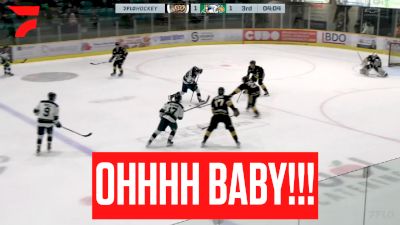 OH BABY! Surrey Eagles Broadcaster Celebrates Big Goal With Bob Cole Tribute
OH BABY! Surrey Eagles Broadcaster Celebrates Big Goal With Bob Cole TributeApr 26, 2024
 Replay: Home - 2024 Victoria vs Surrey | Apr 25 @ 7 PM
Replay: Home - 2024 Victoria vs Surrey | Apr 25 @ 7 PMApr 26, 2024
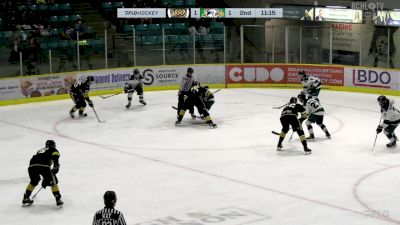 Replay: Away - 2024 Victoria vs Surrey | Apr 25 @ 7 PM
Replay: Away - 2024 Victoria vs Surrey | Apr 25 @ 7 PMApr 26, 2024
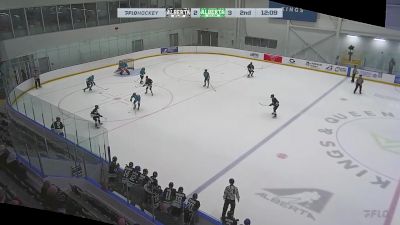 Replay: Home - 2024 Black vs Green | Apr 25 @ 8 PM
Replay: Home - 2024 Black vs Green | Apr 25 @ 8 PMApr 26, 2024
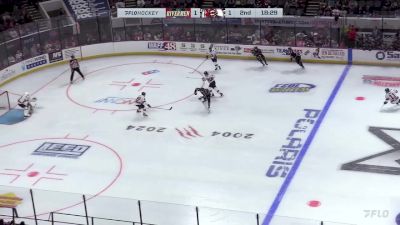 Replay: Away - 2024 Peoria vs Huntsville | Apr 25 @ 6 PM
Replay: Away - 2024 Peoria vs Huntsville | Apr 25 @ 6 PMApr 26, 2024
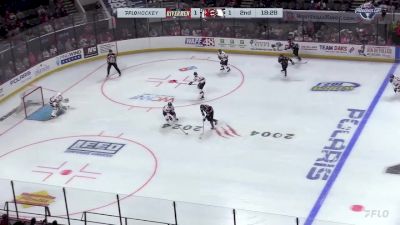 Replay: Home - 2024 Peoria vs Huntsville | Apr 25 @ 6 PM
Replay: Home - 2024 Peoria vs Huntsville | Apr 25 @ 6 PMApr 26, 2024
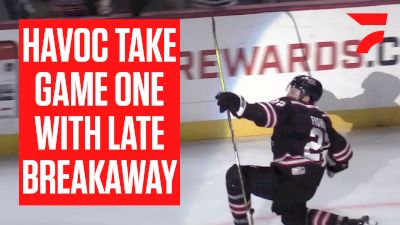 Huntsville Havoc Score Breakaway Game Winner In Game One Of The SPHL Finals
Huntsville Havoc Score Breakaway Game Winner In Game One Of The SPHL FinalsApr 26, 2024
 Replay: Home - 2024 Trolls vs Americans | Apr 25 @ 9 PM
Replay: Home - 2024 Trolls vs Americans | Apr 25 @ 9 PMApr 26, 2024
 Replay: Home - 2024 Mites on Ice vs Comets | Apr 25 @ 9 PM
Replay: Home - 2024 Mites on Ice vs Comets | Apr 25 @ 9 PMApr 26, 2024